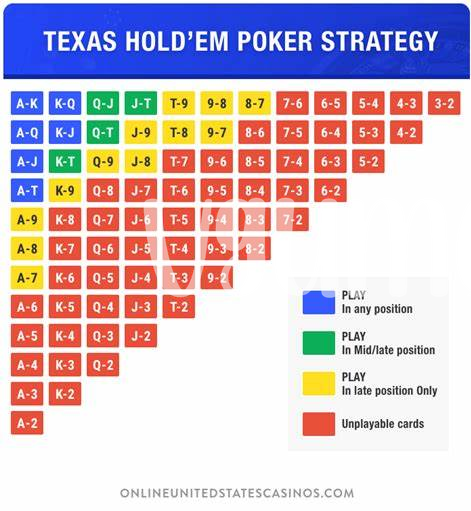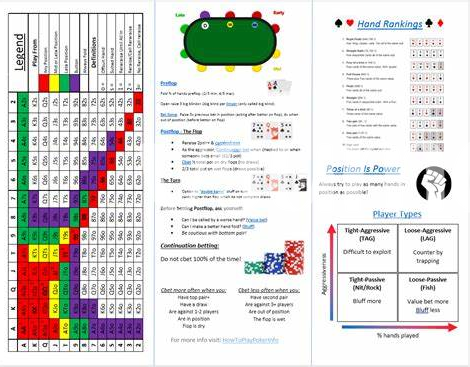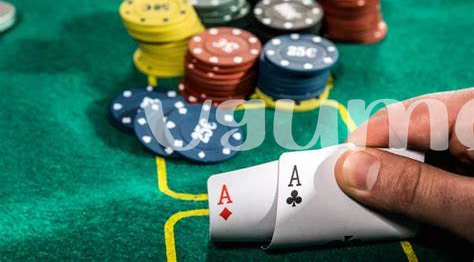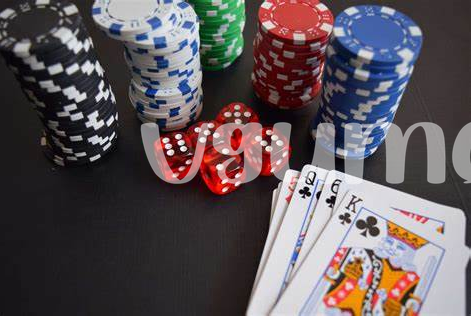Unlock the Secrets to High Stakes Poker with Expert Tips on Using Advanced Poker Strategies to Read Opponents and Gain the Upper Hand.
Psychological Warfare: Reading Opponents in High Stakes Poker
- 🧠 the Art of Bluffing: Mastering Mental Deception
- 👁️ Reading Tells: Picking up on Subtle Clues
- 🔄 the Psychological Tug-of-war: Applying Pressure
- 🎭 Wearing the Poker Face: Hiding Your Emotions
- 🧩 Pattern Recognition: Anticipating Your Opponent’s Moves
- 🤝 Building a Table Image: Manipulating Opponent’s Perception
🧠 the Art of Bluffing: Mastering Mental Deception

At the heart of high stakes poker lies a game of complex psychological play, a dance of the mind where mastering mental deception can tip the balance in one’s favor. Successful bluffing isn’t just about keeping a stoic expression; it’s an art that demands acute awareness and the ability to project false intentions convincingly. This artform requires a player to weave a narrative that misleads opponents, making them believe in a reality that doesn’t exist. From the casual drop of a ‘Candyman’ who might give away too much with just a flicker of excitement, to the ‘Bubble Pack’ of a well-crafted story that encapsulates your play, every move is calculated to influence the psychological battleground.
Bluffing in poker transcends the simple act of hiding one’s emotions; it involves a deep understanding of human behavior and the exploitation of this knowledge to one’s advantage. By picking up on ‘tells’ or inadvertently shared hints about an opponent’s hand, a player can feign confidence or doubt at strategic moments. It’s akin to compounding a ‘Cocktail’ of half-truths and outright fabrications, served with the poise of someone unaffected by the stakes at hand. The challenge lies not only in controlling one’s own tells but also in interpreting and manipulating the information received from others, turning each game into a psychological tug-of-war underpinned by deception.
The strategic deployment of bluffs necessitates a high level of mental agility and emotional control. Players must be adept at switching strategies, sometimes ‘Dumping’ a previously successful approach for a more nuanced one as the game progresses. Just as a ‘Vial’ contains a potent mix tailored to treat specific ailments, each bluff is crafted to target the weaknesses or tendencies of an opponent. Real prowess is shown when a player knows when to hold back and when to push forward, making bluffing a critical component of their arsenal in the high stakes environment. It’s a delicate balance between risk and reward, where the mental fortitude to maintain a poker face under pressure could dictate the difference between a devastating loss and a triumphant victory.
| Psychological Technique | Description | Expected Outcome |
|————————-|———————————————–|———————————|
| The Candyman | Showing fake excitement to mislead opponents. | Opponents misjudge your hand. |
| Bubble Pack | Weaving a believable story around your play. | Distracting and confusing them. |
| Cocktail | Mixing truths and lies to mislead. | Misguiding opponents’ strategies.|
| Dumping | Suddenly changing tactics to unsettle rivals. | Forcing errors from opponents. |
| Vial | Tailoring bluffs to opponents’ weaknesses. | Gaining a psychological edge. |
👁️ Reading Tells: Picking up on Subtle Clues

Mastering the subtle art of reading tells in a high-stakes poker game merges the acumen of a detective with the cunning of a seasoned actor. In the immersive world of poker, each player’s involuntary cues – a quick glance at chips, a subtle shift in posture, or even an unwitting blink – can unveil a story far beyond the cards in hand. Advanced poker strategies emphasize the significance of these non-verbal signals, allowing a player to navigate the tumultuous waters of the game with a compass more reliable than chance. Distinguishing between a genuine gesture and a deceptive signal requires an astute observer, one who can separate the signal from the noise in the frenetic environment of competitive poker.
In this psychological battlefield, appreciating the nuances of human behavior becomes as crucial as the mastery of the game itself. For instance, a player who holds a strong hand may exhibit signs of ‘happy pills’ – a term amusingly borrowed from the lexicon of pharmacy to denote an elevated mood without the necessity of pharmacological intervention. However, the realm of reading tells is fraught with the peril of misinterpretation; just as a ‘ghost tablet’ passes through without effect, so too can a misleading gesture lead one astray, emphasizing the importance of precision and caution. The ability to discern these subtle clues amidst the chaos of strategy and bluff positions a player not just as a participant, but as a formidable architect of psychological warfare.
Employing these insights into human psychology doesn’t just alter the course of a single game; it reshapes relationships at the table, weaving a complex tapestry of interaction where every look, every twitch, offers a glimpse into the adversary’s mental vault. This intricate dance of observation and interpretation, rich in both its complexity and subtlety, requires a level of engagement that transcends the mechanical aspects of poker, transforming it into an arena where the keenest insights into human nature are not just useful, but indispensable. As players navigate this ceaseless ebb and flow of psychological push and pull, they craft an unspoken dialogue, a narrative defined not by words but by the silent tales told through their tells.
🔄 the Psychological Tug-of-war: Applying Pressure

In the intricate dance of high stakes poker, applying pressure becomes a strategic weapon, transforming the game into a silent battlefield of wits and nerves. Advanced poker strategies often emphasize the psychological component of the game, where the real contest isn’t merely about the cards in hand but about who can maintain their composure under fire. It’s a realm where players use every tick, twitch, and pause to their advantage, sending opponents into a spiral of doubt. This pressure isn’t just about making bets or raising the stakes; it’s about crafting scenarios that test the mental fortitude of your adversaries. Every move is like a carefully scripted play, meant to challenge the resolve of the opposition and force errors that wouldn’t occur under normal circumstances.
The prowess of a player in these high-pressure moments can turn the tide of a game. Key to this is an understanding of ‘Pharm Land’, or the poker table’s pharmacology; recognizing when an opponent is on their ‘Happy Pills’, exhibiting overconfidence due to recent successes, or perhaps they’re feeling the ‘Hangover’, the aftermath of a bad beat or a string of losses. It is here, in these subtle cues, where the game’s depth unveils itself. Savvy players leverage this, applying pressure steadily, akin to how one might slowly increase the dosage of a ‘Cocktail’—a mix of bluffs and strategic plays that keeps opponents guessing and destabilizes their game plan.
Moreover, the essence of this psychological tug-of-war lies in not just how you play your hand, but how deftly you can lead others to misstep, creating a mirage of opportunities that are but illusions. It demands a constant state of alertness, a readiness to adapt and exploit the briefest moments of weakness. This dynamic interplay is what elevates poker from a mere card game to a battle of psyches, where understanding human behavior and mastering the art of deception are just as critical as the luck of the draw. Mastering this aspect of poker can indeed turn the tables, making it clear why advanced poker strategies prioritize the psychological over the purely technical. The aim is not just to play the game but to choreograph an experience that unravels the opponent, one hand at a time, ensuring victory long before the last card is dealt.
🎭 Wearing the Poker Face: Hiding Your Emotions
In the nuanced world of high-stakes poker, the ability to maintain an unreadable facade is not just an advantage—it’s a necessity. This is where the essence of advanced poker strategies truly comes into play, transforming the game into a silent duel of wits. Players must master the art of concealing their true intentions, ensuring that their excitement over a strong hand or their dismay at a poor draw remains a closely guarded secret. This emotional discipline requires constant vigilance, as even a fleeting expression can betray a player’s position.
Understanding the importance of a poker face extends beyond the table; it’s a study in human psychology. Just as a ‘Candyman’ might mask the potential impact of prescribed ‘Happy Pills,’ a poker player must veil their thoughts behind an impenetrable expression. The stakes are high, and in this game of mental fortitude, showing any sign of weakness can be the tipping point between victory and defeat. Recognizing this, players often practice in front of mirrors, striving to eradicate any involuntary signs of their emotions, refining their countenance untill it reveals nothing but calm assurance.
The tableau of a poker game is much like the silent communication between a ‘Pharm Tech’ and a patient, where every detail matters, but words are few. Players exchange glances, each trying to decipher the other’s strategy without divulging their own. In this environment, even the most minute gesture—a twitch, a flicker of the eyes, or an impatient tap—can serve as a ‘tell.’ Seasoned players become adept at reading these signals, turning the tables on their opponents by leveraging information gleaned from seemingly innocuous behavior.
To excel in poker and wield the power of a truly neutral visage is to engage in a complex dance of deception and perception. It’s not just about hiding your emotions; it’s about crafting a narrative that leads your opponents astray, making them believe they have you figured out when, in reality, they are playing right into your hands. Achieiving this level of control is what separates the amateurs from the pros, making the poker face an indispensable tool in the arsenal of any serious player.
🧩 Pattern Recognition: Anticipating Your Opponent’s Moves

At the heart of advanced poker strategies, recognising patterns in your opponent’s gameplay can significantly tilt the odds in your favour. This skill goes beyond the basic understanding of the game; it’s about delving into the psyche of your competition, predicting their next move before even they are aware of it. The ability to anticipate what the person across the table will do next can be the difference between a good night and a great one. Every gesture, hesitation, or confident push of chips across the table tells a story – and it’s your job to become the master storyteller.
Predicting an opponent’s moves requires a keen observation of their behaviour patterns. This isn’t about a one-off “tell” but identifying a sequence of actions that indicates what’s coming next. Perhaps it’s the way they toss their chips in the pot when they’re bluffing or the subtle tap on the table when they have a strong hand. This is where the concept of a “comp” comes into play – not the medical term, but rather compiling data on their habits to use against them. It’s the poker equivalent of counting and pouring over every detail, making mental notes that will help you call their bluff or fold before you fall into their trap.
| Strategy | Description | Application |
|---|---|---|
| Pattern Recognition | Observing and compiling behavioural data | Utilize noted patterns to predict future actions. |
| Emotional Control | Maintaining a neutral facade | Prevent giving away your strategy through your expressions. |
| Pressure Play | Applying betting pressure to elicit responses | Force opponents into difficult decisions, revealing their patterns. |
In any high-stakes game, being one step ahead is the key. It’s not just about the cards you’re dealt; it’s how well you play the person across from you. By closely monitoring their playstyle and adjusting yours accordingly, you turn the game into a psychological battleground. However, it’s important to maintain the element of surprise. Just as you’re watching them, they’ll be trying to crack your ‘script’. The ultimate goal is to keep them guessing, remain unpredictable, and use their patterns against them until you emerge victorious.
🤝 Building a Table Image: Manipulating Opponent’s Perception
In the intricate world of high stakes poker, the ability to construct a reliable table image is akin to executing a perfectly timed magic trick. A player’s table image is not just about how they appear during one hand, or even one game, but it is a meticulously crafted perception held by opponents over many encounters. This image can be as deceptive as the colourful cocktails mixed in a quiet bar, designed to elicit specific reactions and strategies from opponents. For instance, projecting an image of tight and conservative play might push adversaries to fold more readily, under the assumption that when you raise, you have the nuts.
Manipulating opponent’s perception requires a deep understanding of human psychology, akin to the skills of a seasoned ‘Candyman’, handing out ‘prescriptions’ in the form of bets and bluffs that lead opponents to underestimate or overestimate your playing style. It’s about knowing when to be aggressive, appearing as a shark amongst fish, and when to recede into the background, letting others underestimate your prowess. Key to this strategy is consistency and patience, as shifting one’s table image too frequently can lead to confusion and mistrust among other players.
The true art in manipulating an opponent’s perception comes from the nuance of knowing wich buttons to push and when. This doesn’t just happen overnight but is developed through a dedication to studying your adversaries, recognising patterns in their play, and adjusting your image in subtle ways that speak volumes. The seamless integration of this strategy is what separates the amateurs from the pros, turning each game into a complex ballet of psychological warfare.
Finally, it’s crucial to maintain a level of unpredictability within the confines of your table image. While you want opponents to buy into the character you’ve created, throwing in an occasional curveball can keep them off balance. This might mean playing a hand in a way that contradicts your established image or taking a risk you normally wouldn’t, to sew seeds of doubt. Such tactics ensure that your arsenal remains potent, keeping the competition on their toes and definately under your control.